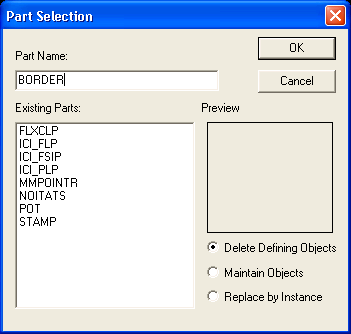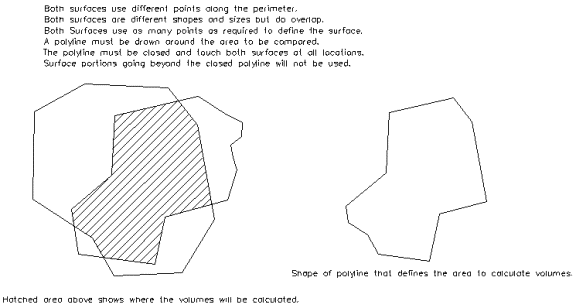There is some confusion about which of the two volume calculation methods to use for many jobs.‚ You have the Area Volume and Surface Volume commands, and many use the wrong one when trying to get an answer.‚ This note will try and clear this up and show you which method to use in which case.
Surface Volumes:
Surface Volumes can only be done under very special cases with just the right type of surfaces.‚ In general, the two surfaces that are being compared must be: 1) the same size, 2) the same shape, 3) the same plan location and orientation, and 4) in most cases using the same points around the perimeter of both surfaces.‚ No polylines are required to define the location to be compared and no Boundaries need to be defined.
Here are the 2 major examples where Surface Volumes will work:
1)
The above surfaces may generate tin triangles beyond the perimeter but because the points along the perimeter are the same for both surfaces, the triangles will also be the same and cause no problems.
2)

The above two surfaces do not create any triangles beyond the perimeter so both surfaces are the same size and in the same plan location and orientation.‚ If you were to walk around the perimeter, you would always be turning the same direction at each vertex. No polylines are required to define the location to be compared and no Boundaries need to be defined.
Area Volumes:
Area Volumes are by far the most common method of calculating volumes between two surfaces.‚ The only restrictions here are: 1) the surfaces must overlap in the areas where volumes are to be calculated. 2) There must be a closed polyline (2D or 3D) enclosing the area to be calculated and it must fall on or touch both surfaces (the polyline does not need to be defined as a boundary to work).
Here are a few examples where Area Volumes will work and Surface Volumes will not:
1)
2)
3) You may calculate several areas at the same time as long as both surfaces exist in the areas concerned.
Conclusions:
Area Volumes has many more options and more flexibility that Surface Volumes and should be used in over 90% of most cases.
Created on: September 1, 2000




Jason Poitras
Comments